Important Information
Programs
Courses
Residential Schools
International Students
Current Handbook
Glossary
Important Information
Application and Admission Enrolment - Rules International Students Student Support Policies Admission - Procedures Enrolment - General Assessment Student Exchange and CQU Abroad - CQU Outbound Research and Graduate Studies Information Entry Requirements Health and Safety Fees and Charges Examinations Examination Definitions Awards and Scholarships GraduationExamination Definitions
Definitions
- 'Allied health practitioner' does not refer to practitioners of alternative medicine, naturopaths, herbalists, etc. unless they are registered practitioners.
- 'Ancillary materials' refers to materials supplied by CQU. It includes but is not limited to: graph paper; statistical books; formula sheets; periodic tables; conversion books; optical mark reader cards and legislation.
- 'Closed book exams' refers to exams where the student may not take into the exam room any study materials (including textbooks, study guides, lecture notes, printed notes from web pages and hand written notes). Exceptions are ancillary materials considered necessary by the lecturer for the completion of the exam, which must be specified on the exam cover page.
- 'Exam centre' refers to the physical location where a student may, given appropriate conditions, undertake a formal CQU exam.
- 'Electronic devices' include, but are not limited to, calculators with alphanumeric keyboards or other programmable forms, mobile telephones, pagers, any form of electronic dictionary and other electronic means of communication.
- 'Exam script' refers to the worked exam answer booklet and/or exam paper, rough working paper and other ancillary materials related to that exam.
- 'Misadventure' is defined as an unexpected situation which is not part of the normal risk of academic studies, employment, family or social life and which is outside the student's control to prevent or to overcome. It must also be clear the misadventure disrupted previously satisfactory work. This is relevant in the administration of academic regulations relating to:
- requirements to complete a course;
- the award of a deferred exam;
- special consideration in an exam;
- withdrawal (without academic penalty) from a course;
- exclusion from enrolment; and
- restructured/provisional enrolment.
Note: except in the case of applications for deferred exams, it must be shown the alleged misadventure seriously interfered with the student's studies to the extent that had it not occurred, he or she would in all likelihood have given a satisfactory performance.
-
'Normal risk' is defined as risks/situations that the average student could be expected to meet in his or her environment. The following risks/situations are regarded as the normal range of risks/situations, but is not an exhaustive list:
- inability to cope with studies or to adjust to family life;
- demands of employment (in themselves or in consequence of promotion), including periods of pressure and being absent temporarily from one's normal place of residence;
- tension with or between parents, spouses and other persons closely involved with the student;
- demands of sport, clubs (including CQU clubs), all social activities and religious commitments; and
- need for financial support.
These examples do not preclude consideration of extreme cases that arise in any of the categories as a result of unexpected situations beyond the student's control.
- 'Unauthorised materials' refers to materials brought into the exam room by the student that are not specified on the exam cover page. Unauthorised materials include, but are not limited to brief cases, mobile telephones, pagers, other electronic communication devices, shopping bags, hats, programmable electronic calculation devices, electronic dictionaries, paper, tissues, blotting paper, writing paper, graph paper, food and fluids other than water.
Formal exam periods are contained in the calendar of principal dates in this handbook. The University will endeavour to schedule exams only in the period designated for exams. However, it may be necessary to schedule exams outside of these designated periods. Online exams will not be administered by Student Administration.
